|
Sunday, July 21, 2019
Time is so hard to grasp. Sometimes it passes slowly, with each minute painfully ticking by, never seeming to move forward. Other times it passes so fast that you can’t believe a month has gone by, or a year. Recently I have realized that my analysis of time has been structured around the frequency of my shunt surgeries. As I’ve slipped into this pattern of 3 or 4 brain surgeries a year, I’ve found myself hyper focused on the number of months that I’m going to get in between the episodes. I always feel this extreme urgency to heal and get back to all aspects of my normal activity as soon as possible, because only then can I relax and fit in as much life as I can before the next round of shunt malfunction comes. I’ve always been concerned with how my situation is affecting the people I love, and this was particularly true when I was in a relationship. The more time I get in between, the better – and the faster I can heal, the less impact on the world around me. I do have some really solid routines for healing and rehabilitation. I have a system that works for me, and a lot of that is really healthy. I was pretty comfortable in this pattern; I felt like I knew what to expect, and how to handle it… as long as I got “the break” I needed in between. News flash, Am. You don’t have any control over the amount of time a shunt is accepted by your body. …Of course I don’t. Even saying all of that seems so silly now, as I process how many procedures I’ve had in the past few months. Instead of having 3 surgeries in a year, I have had 5 surgeries in 2 ½ months – with complications like a massive CSF leak and a shunt infection in between. Everything I thought I knew about hydrocephalus and living with this challenge has shifted, and a new reality has come to light. I used to tell my neurosurgeon that I wanted to get a year in between surgeries. Even though that has only happened once in my life, every time I had a post-op appointment, I would tell him that this was the one. This was the shunt that was going to last. And I was dead serious. I believed it. I was obsessed with getting a break. What the challenge of the past few months has taught me is that while I have no control over the actual time I will have between this madness, I do have the ability to reframe my definition of “the break”. By changing my expectations, and more or less having no expectations, I have started to focus on single days, hours, or even moments – and I’m redefining those as my breaks. The small things. The good stuff. The fun times. But also, the mundane, normal, and routine times. If the breaks are the times that I identify as such, then I am in control of how I view peace in my world—even as the chaos continues, and the future is unknown. Yesterday was a break. A slow and easy weekend morning with a few chores and good coffee. Some quiet time to study and write. A solid lift and a few hours with one of my closest friends. A little bit of bourbon. A good cry and a long nap. Driving to my parent’s house with the windows down, as the sun goes down on Oregon farmland. There is nothing prettier. Soaking up as much family time as possible, as my sister and her family are visiting from Texas. Precious time with my twin nieces – marveling at how smart and beautiful they are at only six years old… and knowing that next time I see them, they will be even more grown up. This… this one day. This was a break. It was a break because I defined it as such. And I acknowledged it as one. And here’s what I know: If it was all I had, it would be enough. Last week, I returned to work full time. My first day back after a month battling the shunt infection and several surgeries, I was so excited. I woke up early and went through my normal morning routine of studying and praying before I got my day started, and I was absolutely sure that I was ready to tackle everything the day had to throw at me. By 11:00am, I was back home and in bed, my nervous system completely overwhelmed by the morning. I slept like a rock for 2 hours, then got myself back together and went back to work for a few more hours before coming home and napping again for 3 hours. I got up and ate dinner, then went back to bed and slept all night. It was hard. A lot harder than I thought. But that one day, coupled with the next, and the next, became the path I was building back to full energy. I was much more aware of that this time. I’ve always said “The fastest way through the shit is straight through the shit. No detours.” But I could feel it this time. I could feel every minute passing as I pushed myself through the shit. The fatigue has been heavier than it’s ever been. Maybe it’s because the infection brought so many more complications. Maybe it’s because they cut my abdominal area 3 times in 2 weeks. Maybe it’s because I’m getting older. But what does it change? It might change how long it takes, but it does not change who I am, or how I’m going to respond. I’m here for the battle, and I will fight every day with the same knowledge that my faith is solid, my tribe is behind me, my heart is strong, and my mind is indestructible. I’m here. It will not change me. This is my break. Much Love, Amy So be truly glad. There is wonderful joy ahead, even though you must endure many trials for a little while. These trials will show that your faith is genuine. It is being tested as fire tests and purifies gold—though your faith is far more precious than mere gold. 1 Peter 1:6-7
3 Comments
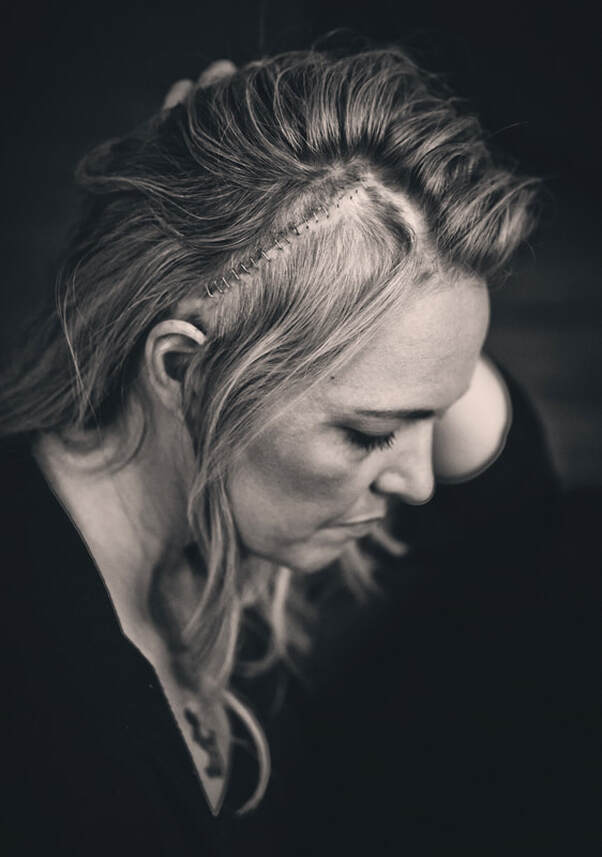 It’s a quiet Sunday afternoon. I’m listening to Jackson Browne and reading back through some journaling I’ve done in the past few months. When I’m sick and having surgeries I definitely find that I write less. Instead, I've made an effort to make short journal entries documenting the day to day events these past few months - as crazy things were unfolding in regards to my health. It feels kind of raw to read about all the little things I have already forgotten about… and I suppose that’s why journaling is so valuable. The days are filled with important moments, and even the painful moments are important. Suffering is meaningless, but the courage that we bring to our suffering gives it meaning. -Victor Frankl I got home from the hospital a little over a week ago. I posted on social media during the 16-day hospital stay and three surgeries, and then for several days once I was home and starting my recovery. During that time, I received so many amazing messages of encouragement and support and I know there were people praying for me all over the world. It was so humbling and comforting. Words can’t describe how it feels, but I am incredibly grateful. Thank you. When I started this blog, I made a commitment to share my story with the public – to support other patients and help educate those who were interested in knowing about my life with hydrocephalus. Sometimes I share a lot of detail about the medical aspect of my surgeries, and other times I feel it’s less important to give specifics. At the end of the day, every single patient with hydrocephalus can have a different experience every single time their shunt malfunctions. That’s just the nature of the condition. So instead of telling you each thing that happened during those 16 days, what I want to share is what I learned during this crazy time – in hopes that those things might help others. Here’s what I learned: A shunt infection doesn’t always look the way you expect it to. I’ve never had a shunt infection before, but just like so many hydrocephalus patients and parents out there, it has been my biggest fear. I’ve always heard the classic symptoms to be fever, headache, and vomiting… and that is usually the case. However, my initial symptoms manifested differently, and even though my medical team jumped right on them, I guess I just either ignored the possibility or was hopeful that it would turn out to be nothing to worry about. It wasn’t until the doctors confirmed in the hospital what they had suspected all along, that the brevity of the whole thing sunk in. The first symptom that showed up for me was a redness and welting directly over my shunt track on my abdomen. I immediately let my neurosurgeon know about it when it showed up, even though it was not accompanied by vomiting, fever, or headache. I actually was feeling pretty good at the time that this all started. I went through two different courses of oral antibiotics, and over those weeks, the severe headache did eventually develop. However, it wasn’t until I was in the hospital with the full-blown infection and my shunt externalized that I had a fever – and I never vomited. Going forward, I will understand that even symptoms that aren’t textbook can lead to a shunt infection. It isn’t going to change the way I live my life – it’s just a new reality. My hospital has an RV parking area with full hook ups for family members of patients. Shunt infections often result in multiple surgeries and a long hospital stay. I can’t say enough about the impact that these difficult and frankly inconvenient episodes cause to a family unit or support system of a patient. I am truly lucky that even as a 39-year-old adult patient, I have an incredible mom who accompanies me to every surgery and hospital stay, regardless of how long. I acknowledge that not everyone has that luxury. But during these hospital visits, my mom and I always try to figure out one or two little things that might make the whole thing just a little easier – even if they are small. It’s our tradition to go over these things on our 3-hour drive home from the hospital. I ask, “What were the game-changers, Mom?” As we made the beautiful drive through the sunny Cascade mountains this time, so happy to finally be heading home after almost a month, we came up with this one. St. Charles is a really nice hospital, and my mom usually stays in the room with me – as we only spend one night, maybe two, on the average shunt surgery trip. But on the 4th or 5th night of this stay, just as I was going in for another surgery and then being transferred into the ICU, our favorite nurse on the Neuro floor mentioned to my mom that the hospital has an area of the parking lot with full RV hookups, specifically for families of patients who travel more than 50 miles. My dad was coming over for my surgery, so he was able to bring my mom their RV, and that provided a much more comfortable way for my parents to stay close to me. I’m not saying this is what you have to do, but just that sometimes focusing on the little “game-changers” make all the difference in these otherwise terrible experiences. Some of our game-changers in the past have been as small as identifying my favorite milkshake on the patient room service menu or remembering noise canceling headphones for my mom so she can rest easier in the room at night. It’s important to acknowledge the little things and constantly learn, as you face forward. Do the things that are actually within your control… no matter how small. There were several days during this process where I was so sick that all I could concentrate on was getting through each hour. Within those hours, I had to choose to stay focused on the very few items that I could actually control. In those crazy hours, as I was fighting the fever and trying to stay sane after being in bed for so many days in a row – I could actively participate in my care by doing one thing… drinking water. By drinking water, I would need to get up to go pee – and by getting up to go pee, I was moving my body. That was what I could do… so I did it. Never underestimate the power of all the small things – it is by the small things that we make big strides. I am a “learner” – I’m aware that not everyone is naturally inclined to applying themselves to new patterns in times of trouble. But I think there are a few things that are universal – and apply to lots of different things. First off, patience and mental control go a long way… especially in the Intensive Care Unit. The bottom line is that processes in a hospital setting take time – they just don’t happen with the snap of your fingers or a frustrated complaint. And often, the nurses wish that they could serve you faster – they just have to go through the protocol. In these times, I try to remind myself that the guidelines they are following are for my own protection, and that there are lots of reasons to be thankful for the quality of care that I am receiving. Lastly, remember that there are opportunities to connect and support others in every situation. Each person working in the hospital is a human being with feelings, stresses, and a life worth respecting. In my darkest times during this infection and all the surgeries, I was met by incredible individuals who were not only willing to get down in the trenches and care for me, but also shared a tiny slice of their own life with me. There were conversations that might have seemed insignificant to some but changed me forever. I will never forget this journey, or the people who helped me get through it. They took a road that was filled with pain and suffering-- and paved it smooth with love and compassion. Thank you for every single prayer, message, and thought. Your love carried me through these days, and your faith held me strong. We’re here on this life path together… maybe for reasons we don’t understand. But we choose to stay – and that is the most beautiful thing you can imagine. Much love and continued health, Am I was lying in a hospital bed on Easter morning, watching the live stream of the service at my home church in Monmouth, Oregon. As my pastor Joe opened the Easter program with a prayer asking God for my comfort and healing, I couldn’t hold back my emotions. I was 150 miles away and in so much physical pain that I could hardly move – not to mention I was still in complete shock from the events of the previous 24 hours. Tears rolled down my cheeks and I closed my eyes. What happened?? How did this happen?? Just 48 hours earlier, I had been completely fine. I’ll rewind a little bit to catch you up… just in case you don’t follow my story on Instagram. On April 11th, I had a shunt valve replacement surgery after several months of struggling with nausea and fatigue symptoms. Everything went as planned, the surgery was fairly easy, and I had immediate relief. I was happy to be past all of it again and was determined to get things back on track. I went to my post-op appointment in Bend on April 19th feeling good. My neurosurgeon was really happy with how I looked and felt but decided to leave the staples in my head incision for another week just to be safe. No alarms at all… all of this is pretty normal. Since my neurosurgeon is 3 hours away from where I live, I decided to stay the night, and it turned out to be a really good thing that I did. While I was sleeping, my head wound started leaking significantly, and I woke with a soaking wet head of hair at 3am. I’ve never had a CSF (cerebral spinal fluid) leak before, but I knew immediately what was happening. My friend took me to the emergency room, where X-rays were taken, I was evaluated, and my head was stitched back up like a baseball to stop the leakage for as long as possible. I wasn’t in any pain initially, but that changed drastically over the course of the day and I was hospitalized later that night. My body was in shock from all the lost spinal fluid, I was running a fever, and was in the worst pain. There was concern that I might have an infection, so my medical team wasn’t taking any chances. They blasted me with antibiotics and tried all night to get my pain under control. So, there I was on Easter morning, watching our church service on YouTube. Fighting the fever, the time passed slowly with 10-20 minute naps and the nurses taking vitals every 30 minutes. As I counted the hours, I kept repeating to myself a quote from the ancient stoic philosopher Marcus Aurelius. “The blazing fire makes flame and brightness out of everything thrown into it”. Messages of encouragement and support poured into my phone day and night from time zones all over the world. The outpouring of love was comforting and humbling. My family was amazing. My parents had rushed over to Bend the night before, when they found out I was being admitted. My mom is such trooper and an amazing mama bear… no cub of hers is going to be in the hospital without her being there to supervise-- if she can help it!! She stayed with me and slept in my hospital room for six days—well… she tried to sleep! It was a pretty restless. My six year old twin nieces Kylie and Kolbie sent their own version of a music video from Austin, Texas. With Kylie strumming her ukulele, they sang along to the Kacey Musgraves song “Rainbow”. I smiled as they serenaded me with these words: “Well the sky has finally opened The rain and wind stopped blowin' But you're stuck out in the same ol' storm again You hold tight to your umbrella Well, darlin', I'm just tryin' to tell ya That there's always been a rainbow hangin' over your head” I’m so thankful for my parents, siblings and nieces. I know this whole thing scared them, but my family has always been able to bind together and get through the crazy episodes of life. Crazy episodes. Like brain surgery #24 and #25, 12 days apart… and all the other stuff in between? Yeah. That’s crazy. It’s real. Fast forward and as I’m writing this, I’m about 10 days post-op from that second surgery. When I was finally cleared of all infection and they were able to operate (on April 23rd), they found that my shunt valve was completely blocked and fully disconnected from the ventricular catheter. While there is no way to know exactly what caused this, the theory is that the shunt valve clogged (after only 9 days) and then the resulting pressure caused the valve to blow off the end of the catheter. The catheter kept pulling the CSF from my ventricle and dumping it into the space behind my incision, which eventually couldn’t hold and caused the leak. As soon as I was out of the surgery with a new shunt valve that was properly connected, I was instantly better. Within just a couple of hours, the pressure behind my eyes and the extreme headache pain I had experienced for days was virtually gone. So, here’s where I’m at today. There are plenty of questions. Is this a new reality? I hope not, but I have no control of that. Are we really going to have valves fail in less than 10 days? I hope not, but I have no control of that. Are we now going to completely wipe my body out with antibiotics every time I spike a fever? I hope not, but I do understand why they needed to do this. And am I supposed to be ok with this? That’s my choice. Processing trauma of any kind looks different for every individual. For me, I’ve just tried my best to focus on only what I know for sure right now, as well as what I would like to see in the future. I often tell people, “It’s ok to be different on the other side of challenge and experiences”. There’s this overwhelming need in society to be “ok”. It seems like the end goal of each day is that you held it all together and got through the day unscathed. Even more so, we strive to be the way we perceive others to be, even though much of that perception is shaped through the curated and filtered lens of social media. When you ask someone how they are doing, how often is the answer “fine”? Every time I go through these surgeries, I remind myself that I’m going to be different… and that’s ok. It doesn’t have to be pretty. I embrace the new Amy and tell her she is ok. My friends have been instrumental in soothing my soul and making life easier during my recovery. One of my dear friends showed up on my doorstep the day I came home from the hospital with a bag full of groceries. My sweet friend Ken, who I met on an airplane (see my last blog post for the story), sent me the most beautiful flowers in the hospital – with lilies and roses that made every nurse and doctor tell me how good my room smelled. There were countless text messages. Forehead kisses and tight hugs. And some really hard conversations. Can you believe that there are hundreds of thousands of little babies and non-verbal children going through this battle with hydrocephalus? It’s not ok. We are going to keep pushing for answers and better solutions. While we are all relieved and thankful that I have been so carefully cared for, we are not ready to accept that brain surgery is the only option. We need a cure for hydrocephalus. And even on the days when it’s really hard to keep sharing my story, I’m going to stay committed to this path for as long as it is providing awareness and comfort. In her book Brave Enough, Cheryl Strayed writes, “When you recognize that you will strive not in spite of your losses and sorrows, but because of them, that you would not have chosen the things that have happened in your life, but you are grateful for them, that you will hold the empty bowls eternally in your hands, but you also have the capacity to fill them? The word for that is healing.” I’m healing. In the words of Brene Brown, I’m in the arena, getting my ass kicked. But I stayed. We stayed. And we got through it. I was strong enough. I was ready. I found peace in the midst of the chaos, by clinging to my faith and holding what I know. My brain and heart battled hard. My mind battled even harder. And we won… for now. I’m healing. I don't believe in chance meetings.On a plane ride to Nashville back in December, I met a man named Ken Lyons. It was a Southwest Airlines flight, so you have to pick your own seat. As soon as I walked onto the plane, he made eye contact with me and I decided to take the middle seat next to him. As we took off, we started to make small talk. He was on his way back from a quick trip out to Portland from his home in Omaha, Nebraska to attend an awards ceremony for his son’s work. It was clear that he was super proud of him. He asked me what I was traveling to Nashville for, and I told him about my friend Erika – and how we were meeting in Nashville to celebrate surviving the crazy year we both had. Erika successfully battled breast cancer in 2018. This led to Ken and I talking about the unique friendship that she and I have. I told him about how we were inseparable when she lived in Oregon, how she has supported me through all of the brain surgeries I’ve had, and all the incredible food she’s fed me over the years. I also told him about how every Friday, I’d pick Erika up and we’d go grocery shopping together, then out to Vietnamese food for lunch. We laughed about how our dogs would have sleepovers. I teared up as I told him about how she stood by me through the dark days following my divorce. We talked about hydrocephalus, brain injury, and rehabilitation therapies. We talked about our faith, family, and motivation for moving forward. We discussed mental training and stoic philosophy, and traded book recommendations. It was a rapid-fire conversation that lasted the entire trip. It turns out that Ken and I have a lot in common. He holds a similar faith, enjoys learning and studying new things, and is also battling a neurological condition. We traded information and ideas – and I encouraged him to be a moving target. To keep on walking. To stay in the arena. I told him that my life is a living testimony to the fact that you can navigate the ups and downs in life – with a little bit of stubbornness, and a whole lot of grace. When the plane touched down, Ken turned to me and he said, “Amy. You are like a human charging station. I just plugged in and got charged up, and now we part ways.” We got off the plane, and I gave him a hug. I’ll never forget the day our paths intersected. Although he called me a charging station, he didn’t know that he renewed my spirit as well. A perfect stranger had changed my life by simply having a conversation. In the months since that flight, we have exchanged a few emails back and forth. On Christmas Day, I received an email from Ken that read “Merry Christmas, Beautiful Spirit.” These sweet words brought tears to my eyes. I’m forever grateful for the opportunity to plug in and charge up. - for Ken... stay strong, my sweet friend. love, Amy A few weeks ago, I turned 39 years old. Thirty-nine is kind of a weird age. On one hand, it’s just a number – it’s simply another year and another day. Every day is important, and every year presents a new opportunity. But on the other hand, it’s almost 40… which is one of those milestone birthdays—and one that for whatever reason, feels important. My life has changed significantly in the past few years, with tough changes in my health and relationship status – but undeniable growth in other areas. I’m mentally and emotionally stronger, and much clearer in my spirituality. But turning 39 has been interesting, because it’s challenged me to look at where I’ve been and think about where I’m going – and has brought a certain resolve to get some key factors figured out (to the best of my ability) before my next birthday. One of the fundamental things I’ve been examining within myself is where I am at with my overall health, and the ways in which I am currently handling it. It’s extremely hard to type this sentence… but I am really unhappy with my body right now. It’s so uncomfortable to put that thought out there, because in my mind and in my heart, I know I shouldn’t feel this way… but I do. My weight and body shape have changed a bit in the past several years, even though by many standards, I understand that I look just fine. Please don’t send me a message about how I am being completely ridiculous about this… I fully realize that this opinion will not be shared by the people who are close to me. But here’s the deal. I have this personal policy – that I’m not allowed to complain or feel negatively about something if I’m not willing to make changes that will move me forward. So, I have asked myself, “Why. What’s wrong with the way you look?” I’ve never been a girl who has been wrapped up in body image… I’m actually kind of a tomboy at heart. I wasn’t raised to focus on what I look like, and I am so thankful for that. Also, I really do have a generally healthy and very active lifestyle. I eat good quality food, and I lift weights avidly – 5 days a week. So… what’s the problem, Am?? Like most things, the answer is multifaceted. Even though I know I shouldn’t be, I’m angry at my brain for the surgeries that I continue to endure. When I saw my neurosurgeon this past week, we made the decision to schedule my next brain surgery – and we counted that this will be my 20th surgery related to my hydrocephalus in 6 years. It will be the 24th overall. The daily pain, the various medications, and the basic trauma of going through all of these episodes has taken a toll on my physical being. There’s just no getting around that part. The only way for me to not be angry about the situation is to believe and understand that God has a bigger purpose for my life, and that He will somehow use all of this pain and suffering in that purpose. If I didn’t believe that, I would be absolutely discouraged and devastated by these trials. I’m working every day to accept the challenge and live out my purpose, but it is so hard to process at times. The second reason is that I’ve let myself be lazy about the food and drinks I put into my body. Like I said, I generally eat high quality food, and I’ve accumulated a lot of knowledge about nutrition over the years. I love to cook, so when I do, I prepare things that are good for me. However, the emotions and exhaustion resulting from the roller coaster of the past few years has made me much less diligent about making the right choices all the time. It’s safe to say that I often eat the wrong things at the wrong times – and sometimes when I don’t feel good, I don’t eat at all. If consistency is the key to forward progress, I’m failing in that department. Lastly, I acknowledge that my exercise routine has changed significantly since the time when I feel like my body was where I wanted it to be. The frequency has not changed, but the type of training has. In 2012-2017 I worked out with a couple of different trainers and embraced more of a strength and conditioning style of programming. My exercise was much more varied, and I also worked out in a boxing gym off and on during that time. (Keep in mind that this was also about 15 brain surgeries ago!) In late 2017, I changed trainers to the strength coach I currently have and changed my programming to a strictly strength-based regimen. It was a huge shift, but I adore my coach and I’m the strongest I’ve ever been. I love lifting weights, and the more brute strength I have, the more stable and balanced I feel. It’s also made a difference in my ability to sleep and heal from surgery. All of these things hold incredible value, so I don’t have any regrets. But there’s no question that the heavy lifting 5 days a week along with the lack of conditioning has changed the shape of my body. I’m strong, but I’m just not as thin as I was. I’ve come to this conclusion. Mental discipline needs to be applied to this area of my thought life. The way I feel about my body is completely in my own control, and if I want it to change, I just need to make the decision to change it. How I feel about myself is a choice, and if I’m not happy with something, I am fully capable of taking the steps to modify what I’m doing. I also have the ability to make a clearer distinction between what I want and what is necessary – and separate the emotional part from the necessity. This involves asking myself some difficult questions, then facing the answers head-on and dealing with them. Do I want to be super thin, or do I want to be incredibly strong? Why do I feel like I don’t look good enough? Does it have to do with the fact that I’m single? And where does the treatment and recovery from my hydrocephalus fall in all of this? Am I going to fight this condition from a proactive standpoint, like I encourage other people to do? Here’s what I know. I am strong enough to face the feelings that I’m having and make choices that will change the game. I am willing to stay in the arena and battle the demons that tell me I’m not good enough and not pretty enough. And I’m resilient enough to start over when I have to. Stay beautiful. Peace, Amy “What are you thinking about, Am?”
I guess I must have gotten quiet, but the question brought me back to the present moment. Aron is one of the only people who has seen the day-to-day, week-to-week battle of the last year and a half. As my strength coach, he’s had to endure the past few brain surgeries and recoveries almost as if he was going through them himself—and it’s been a rocky road. And as one of my closest friends, he also knows that when I don’t say anything, I’m probably thinking about something. The monkey mind rarely stops thinking. So, I looked up at him (upside down) and answered. “I didn’t lose any strength.” Those words are heavier than all the pounds of weight loaded on the barbell I just lifted. As I laid on my back and let my brain unwind, I thought about how hard it was to get back to this point. The nights I couldn’t sleep more than a few hours. The days when I could hardly move because of the pain. The times we lifted weights with a giant ice pack ace bandaged to my torso. Dose after dose of anti-nausea medication. The many times I’ve passed out. Rep after rep of weight lifted off the ground—a symbolic tribute to the promise that I will stay in the arena. Day after day of stringing little victories together until we can declare that I am finally healed from the latest greatest trip to the operating room. All of it is part of this crazy, excruciating, confusing, and beautiful lesson I’m learning… that I am living proof that you can find peace in the midst of chaos and catastrophe. “No Am… you’re stronger than you were. We are stronger than we were.” Aron, you’re right. We are stronger. I bury myself in this constant drive for progress, obsessing over all the little things and losing sight of the big picture. I need to zoom out and look at the journey through a different lens, recognizing that I’m making it. We’re making it. As it always is, the physical recovery from the surgeries I had last year (May, September, and October 2018) has been a roller coaster. If you’ve ever had brain surgery, I know you understand this. But truly… if you’ve ever had ANY type of surgery – let alone back-to-back-to-back surgeries – you get it. The effects that the anesthesia alone leaves on your body can take months to correct. The biggest struggle I’ve experienced in this recovery period has been extreme nausea every morning. Naturally, we’ve assumed that this was an issue with the drainage of my shunt – either too much or too little. We’re about four months into figuring out a shunt setting and combination of anti-nausea medications to get this under control. My neurosurgeon has adjusted my shunt setting a few times, and my primary care doctor and pain management specialist are involved in finding the right combo of meds. It’s a constant work in progress – we rejoice on the days when it seems even a tiny bit better, and plough through the tough days when it feels like it will never end. As my friend and fellow hydro warrior Bryant always reminds me, “Chin up, eyes forward.” Mentally and emotionally, I am doing well. I have created a routine in which I can regularly have a peaceful couple of hours to myself in the morning, and it has helped me immensely. Between my career, my time in the gym, and the fact that I live with two of my siblings (which is amazing!) I am around people all day long. I decided about a year ago that I would get up earlier every day in order to have some quiet time and a routine time to study, pray, and write. I’ve grown to love this time, and it’s not hard to wake up early any more. As we near the end of the first quarter of 2019, I’m excited about the plans and goals I have for this year. I’ve got some projects coming up that will stretch my comfort and challenge me mentally. Every day is a new opportunity to grow and learn, connect with people, and be influenced by the good things around me. God has truly blessed me and kept me safe through all the insanity swirling through my world the past few years—and I am prepared to move forward as called. We’re only going to get stronger. We don’t go backwards. It’s like riding a bicycle downhill without brakes. We can pedal backwards, but we keep rolling forward. Let’s do that. #we. for Aron - Love, Monkey 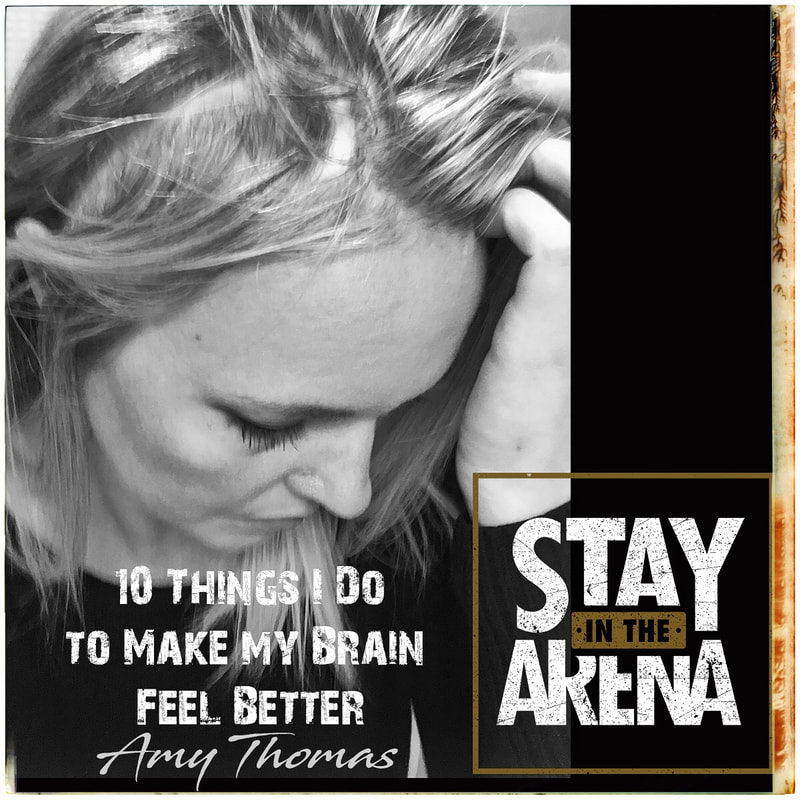 Hydrocephalus sucks. It really does. It’s like sailing on the uncertain and ever-changing sea of spinal fluid, hanging on for dear life. There’s a John Mayer song called “Emoji of a Wave” and a close friend of mine used to make me laugh by quoting the lyrics to this song to me. Whenever the proverbial skies would darken and the storms of shunt surgery were inevitable, he’d say to me, “Oh, Honey, it’s just a wave.” We ride these waves… these waves of water on the brain. But I’m always looking for ways to improve. I feel like we all are. In my last blog post, I shared 10 random things about my journey with hydrocephalus. Today, I want to share 10 things that I do regularly that I believe make a difference in my ability to fight this condition. If you are battling hydrocephalus as well - or if you know someone who is – I hope that this post is helpful in some way. I know that I have always found comfort in learning what has helped other people. Many of these concepts are also shared in more detail on my website. While I can’t give medical advice because I’m not a doctor, I hope that these topics can give you some ideas to ask your own doctors and therapists about. Lastly, thank you to everyone who plays a role in keeping me healthy and safe. It takes a village, and I’m fortunate to have some brilliant and caring people in my corner. We’re building this road, and I am committed to walking it with relentless determination and reckless joy. May we never stop learning. #we. Hydrate (and eat) regularly. Hydrocephalus is defined as an abnormal accumulation of cerebral spinal fluid (CSF) in the ventricles of the brain. The human body makes about a soda can of new spinal fluid every day. Everything we put in our bodies either supports the body in making fluid or dehydrates the fluids in the body. Although it may be a very simple way of looking at this, I generally try to decide whether I feel like my symptoms are from under-draining (high pressure) or over-draining (low pressure) – then manipulate the fluid my body is making or absorbing by eating and/drinking accordingly. The body is a complicated organism, but I do find that sometimes I can help myself out just by staying generally consistent with my nutrition. Then I can adjust that baseline as needed. Ask your neurosurgeon or neurologist what foods and beverages will positively or negatively affect the levels of CSF in the brain. As a side note, I have found an anti-inflammatory version of the Paleo diet (no grains, legumes, or dairy) with an emphasis on high quality meats, vegetables, and fat has been very helpful in my quick physical recoveries from surgery. I am not always strict with this protocol, but usually try to follow it closely for a few weeks after each surgery. Exercise consistently. I strength train with a coach five days a week. Staying active and as physically strong as possible is one of the most significant factors in my success over the past 5-6 years. In addition to staying ready for any issues that may arise with my shunt, I have found that even if the actual act of lifting weights is uncomfortable, I generally have lower pain levels if I am lifting regularly. I get a lot of questions from people in the hydrocephalus community regarding how physically active I am – and the most common questions are about what to do if exercise makes your pain worse. Again - I’m not a doctor. But what I have found is that generally speaking, physical effort is going to help with high pressure (under-draining) symptoms – which is the most common type of pain for me to have. Low pressure pain, from over-draining of a shunt, is more than likely going to be made worse by any sort of exertion. These things are important to track, and to tell your neurosurgeon about. Aron, my strength coach, is usually one of the first people to notice subtle changes in my functioning… because he is tracking what I normally am able to do and can note even small changes or trends in my training. Then we use that information to help my neuro team when they are trying to figure out if my shunt is occluding again. Lay down when I need to. Just like the exercise thing, it’s important to understand how body position will affect your shunt. If you are over-draining, and activity is making things worse, the only thing that may help is to lie on your back, to slow the rate of the shunt. Sometimes, if just lying down doesn’t help, I lay on my back with an ice pack at the base of my skull, and/or elevate my legs. Medicate to the lowest common denominator. I have a strict policy not to answer questions or share information about medications – past or current. This is an area that I strongly believe should only be discussed by a patient with their medical team. But I will tell you that in general, I try to take the least possible amount of medication that will reduce a reasonable amount of my pain and symptoms. I call this “medicating to the lowest common denominator”. For me personally, it’s important to put as little medication as possible into my body on a regular basis. I do have a pain management doctor who I work closely with to manage my care. Keep a fairly structured schedule. I keep as close to the same sleep schedule as possible, seven days a week. I also exercise on the same days and keep my work schedule consistent. All of these factors make it easier for me mentally and physically – and again, really help with comparing with a baseline of energy and function when I start to malfunction. Understand how trauma and damage to my nervous system play a part in my pain and symptoms… and focus on soothing those factors. A few years ago, I started to study the nervous system and how the brain reacts to trauma. I found that a lot of my symptoms are consistent with the physical struggles that affect traumatic brain injury (TBI) and post-traumatic stress disorder (PTSD) patients. This has helped me to understand and accept many of the issues that I experience – especially right after surgery. As it does with every patient, it has evolved over time. Some of my symptoms are very predictable now, but others are new and can be scary without that general understanding of what my brain and body are trying to process. My study of this subject has led to work with some brilliant rehabilitation experts, and I am always trying to find new ways to soothe my nervous system. Some of the things are simple, like swinging on a swing set. Others are more involved, like working with a therapist who specializes in a modality called Trauma Release Exercise (TRE). Stay spiritually engaged. My relationship with God is a big part of my life. It keeps me grounded in what I believe to be true. Above all things, I have great peace in my belief that God created me with a purpose. There may not be a reason for my pain, but there can be a purpose. I’m willing to stay in the arena and see how that plays out. That’s my choice, and I actively choose it every day. Practice mental training. I have written extensively on my blog about mental skills training, and I practice certain aspects of it every day. Meditation, affirmation, and relaxation techniques can all play a part in how I feel on a physical basis – because it affects how I experience pain. It doesn’t mean that the pain isn’t there, but it helps me get through it by controlling my response. See a counselor when I need extra support. I have seen a counselor off and on for many years and have also done therapy with a pain management psychologist. All of the work we have done has given me a basis of strength on which to draw when things get hard. I am thankful for the support I have received from my counselors. I always encourage patients, parents, and children affected by hydrocephalus to pay special attention to their emotional and mental health, as it is so crucially important and makes a difference in your physical health as well! Listen to lots of music. Music is an amazing healing tool, that has been scientifically proven to affect the brain in such unique ways, that it isn’t even fully understood yet. But listening to music as a form of meditation has been a part of my daily routines for several years now. I rely heavily on a constant stream of specifically curated playlists of music to get me through difficult spikes in pain, and to generally soothe my soul. Music truly heals. 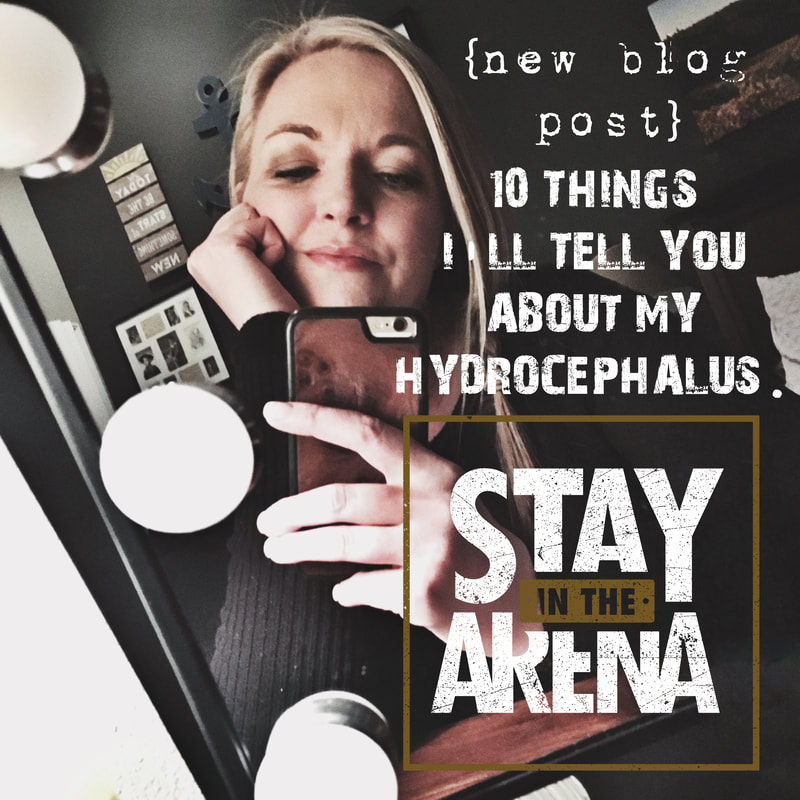 Here are 10 things I’ll tell you about my life with hydrocephalus (in no particular order). 1. It hurts. The most common questions I get via my blog or social media relate to what my headache pain is like, and how I treat it. I have a strict policy that I don’t share specifics regarding medications, etc. but I will tell you that I do have chronic daily headaches, and I manage them with a combination of medication, lifestyle, and therapy. Mental training and meditation are also a part of my daily life, and through these I control my reaction and experience with pain. 2. I believe that the trauma my brain (and body) goes through due to hydrocephalus can be healed-- if I am willing to put in the work. When I was re-shunted in 2012, I made it a personal challenge to learn as much as I could about neuroscience and the brain. I devoured everything I could learn about hydrocephalus and the treatment options that are available. I also researched the healing processes of the brain and body. I currently do strength training (weight lifting) five days a week, and work methodically towards rehabilitation after each surgery. Music therapy has helped me a lot. In addition I focus on my nutrition, hydration, and rest to assist in my healing. 3. I love my neurosurgeon. I travel 3 hours for the surgeon that I have seen for over ten years. He is in a small market (Bend, Oregon) but the drive is well worth it. The most important things to me are that I communicate well with him, he knows my case, and I know he believes in me. Even when I have a hard time healing from brain surgery, and he knows I will give 100% effort, all the time. There is nothing more crucial than having a good working relationship with the person who is making game-time decisions on your behalf. 4. My face tingles. The facial nerve that runs through my right cheek tingles intensely, is painful, and makes my eye droop sometimes when my shunt is acting up. This is not necessarily a classic symptom of hydrocephalus. But it’s a symptom that I have – a result of having the right side of my head cut open 20+ times. It’s just damaged. So… sometimes things happen that lead to other things happening. It’s just part of the deal. I try hard to take care of all those little things that come along with the overall package – because taking care of the little things makes dealing with the big things a heck of a lot easier. 5. I have trouble with balance. Yep. It’s almost comical. My balance is so bad sometimes… I have fallen in the grocery store, on construction jobsites, and in the gym – all in the past 6 months! So, I work really hard at staying safe, and knowing the environments in which my brain gets a little shaky. Personally, I have a harder time with balance when my nervous system gets overwhelmed – so I try to stay out of situations where there is a lot of confusion… big crowds milling around, or a lot of flashing lights and colors. Those are things that bother me personally – you may have totally different triggers. But just know that if you struggle to stay on your feet, you are not alone! 6. It takes about 3 weeks after brain surgery for me to start to feel like myself again, and it takes about 6 weeks for me to fully heal. I have a pretty consistent response to surgery, and I am thankful for the predictability of these patterns. I find comfort in knowing that the horrible parts won’t last forever, and I am highly motivated to push for the good days. 7. Sleep is a battle. Lying down makes my programmable shunt’s flow slow down, and I get really bad pressure headaches at night. I also have a lot of nerve pain now, which flares up at night when I lay down. I have never been able to get into a deep sleep if I’m propped up, so I just try to sleep the best I can. When I wake up in the middle of the night, I have to get up and walk around a little bit. Then I listen to a sermon from one of my favorite pastors, an Audiobook, or a sleep meditation until I fall asleep again. 8. My hair is falling out. I was blessed with really thick long blonde hair – which completely covers my incision site. But my scalp has taken a beating on the right side, and recently I have had hair falling out in big chunks, which is really alarming. I found out that this is a common trauma response, especially after a lot of anesthesia… and I had 3 surgeries in 5 months in 2018. So I’m taking all the steps to protect my hair as best possible, but also to soothe my nervous system. It’s slowly getting better! 9. Hydrocephalus affects my relationships with other people. This might seem obvious, but it’s worth saying out loud (or on paper… or in this blog post.) Sometimes hydrocephalus has had a negative effect on my relationships, but on the flip side… there are people in my life that I never may have known if it wasn’t for hydrocephalus. There are lots of things that can be said on this topic… In fact, it was one of the things I spoke about at the 2018 HA Conference – but the bottom line is that the people who are meant to be in my life will be there. Others, who are meant to be there for just a season, will come and go. Ultimately, this is my path to walk… and for those who make the choice to stand in battle with me today, I am forever thankful. 10. I am grateful for the journey. When I was diagnosed with hydrocephalus at age 17, I had no idea how much it would change my life going forward. Recently I have spent a good deal of time studying ancient stoic philosophy. Learning about the stoic mentality has given me a better understanding of how people in history have overcome enormous obstacles. I have come to accept that the exact thing that has brought me the most pain and challenge in my life has also been the thing that has brought me the most purpose and motivation. I believe that hydrocephalus has made me a stronger person, and has taught me patience, endurance, and empathy for others who are in the same boat. I have committed myself to using the journey that I am on to try to help other people, by sharing my story and supporting them in their own. For these things, and for the incredible souls that are on this life path with me, I have relentless love. Over the years, I have shared a lot of things about my life with hydrocephalus, but I still feel like there are so many people out there who are struggling with loneliness in this diagnosis. If you are one of those incredible humans… if you have hydrocephalus and feel alone, or if you have a child who has been diagnosed with hydro and you are desperately looking for information, inspiration, and comfort… I’m here to tell you that you are not alone. We may be facing a giant mountain of uncertainty, but we will climb it together. Thank you for reading my words. And thank you for walking beside me. Here’s to our relentless pursuit, Amy Several years ago, a therapist suggested that I write messages to myself on post-it notes, and put them on my mirror. These photos have become a thread in the tapestry of my online life, but I have never shared what the notes mean to me. In this blog series, I will share a handful of those moments - in hopes that it will provide encouragement to someone out there.  You cannot love in moderation. This is a line from a song called Land of the Living, by Matthew Perryman Jones. Anytime I hear this song, it makes me feel emotional. There are so many words in this song that hit me like a ton of bricks, but this line is the most important. You cannot love in moderation. It reminds me to allow myself to be broken and open in relationships that are safe and reciprocal. To allow the walls around my heart to come down is the only way to have true connection with other people. Even though I know this, it’s still really hard. In my life over the past several years, there have been so many major changes. It’s not natural for me to allow myself to be truly seen by anyone, because I feel the constant need to guard myself. When I allow myself to love wholeheartedly, there is a deep ache that comes with the knowledge that I am allowing that person to be close enough to destroy me emotionally. However, I do believe this is why we are placed on this earth together. I believe we are to care for the ones we choose to walk alongside, and that this is the true purpose in life-- and what makes all that pain worth the battle. You cannot love in moderation Dancing with a dead man's bones Lay your soul On the threshing floor Between the walls of the river, Shoulders bare the sacred stones We made it alive We are not alone Kiss the ground And change your name Thank you Matthew Perryman Jones, for this beautiful song – that rocks my soul and brings be back to center. Music heals. #musicheals All my best, Amy Several years ago, a therapist suggested that I write messages to myself on post-it notes, and put them on my mirror. These photos have become a thread in the tapestry of my online life, but I have never shared what the notes mean to me. In this blog series, I will share a handful of those moments - in hopes that it will provide encouragement to someone out there. 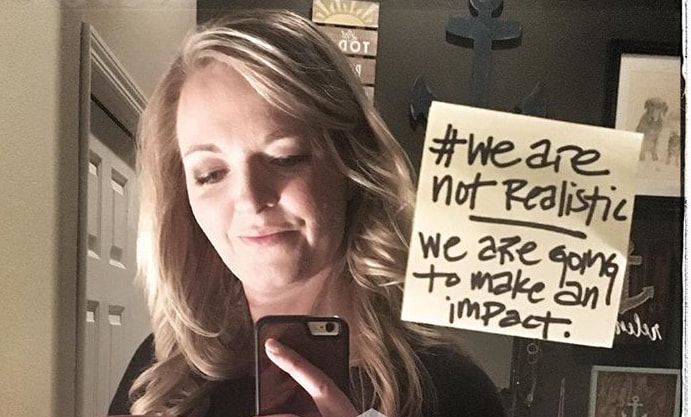 “You know, Amy… At some point, you just have to be realistic about your condition.” This was the feedback I received a couple years ago from a neurologist who was seeing me for my hydrocephalus. I’m sure she meant well. Actually, she might have even been trying to encourage me -- by lowering my admittedly very high expectations. But here’s the deal. I’m not looking to “be realistic”. I aim to be extraordinary. Every day I work to discover the things that make my experience and impact in life more meaningful. I may not have the skills and knowledge to find a cure for hydrocephalus. However, I do have the ability to support the incredible humans who are working every day on new solutions. I am living every day to the fullest of my abilities, and I continually seek a better understanding of the things that are in my control. I do these things with some very committed and likeminded individuals. My inner circle is small, but it is mighty. Together we face forward, staying focused on what we can impact through perseverance and education. It’s why I use the hashtag #we in my posts. WE are doing this together. WE are going to live and love between the madness. WE are going to help the world understand the severity of hydrocephalus, and the need for better answers. WE are not going to settle for being “realistic”. WE are going to make an impact. Together. #we. - Am for aron, who chooses to catch me, and absolutely refuses to waver. #we. |
AuthorMy name is Amy but friends and family call me Am. I am a lover of dogs, good whiskey, and strength training. I'm a brain surgery survivor (x31), a fiddle player, a construction designer, and a boxing enthusiast. I have six real siblings, and five fake brothers. I love deeply, and consider my close friends to be family. Archives
February 2022
Categories
All
|

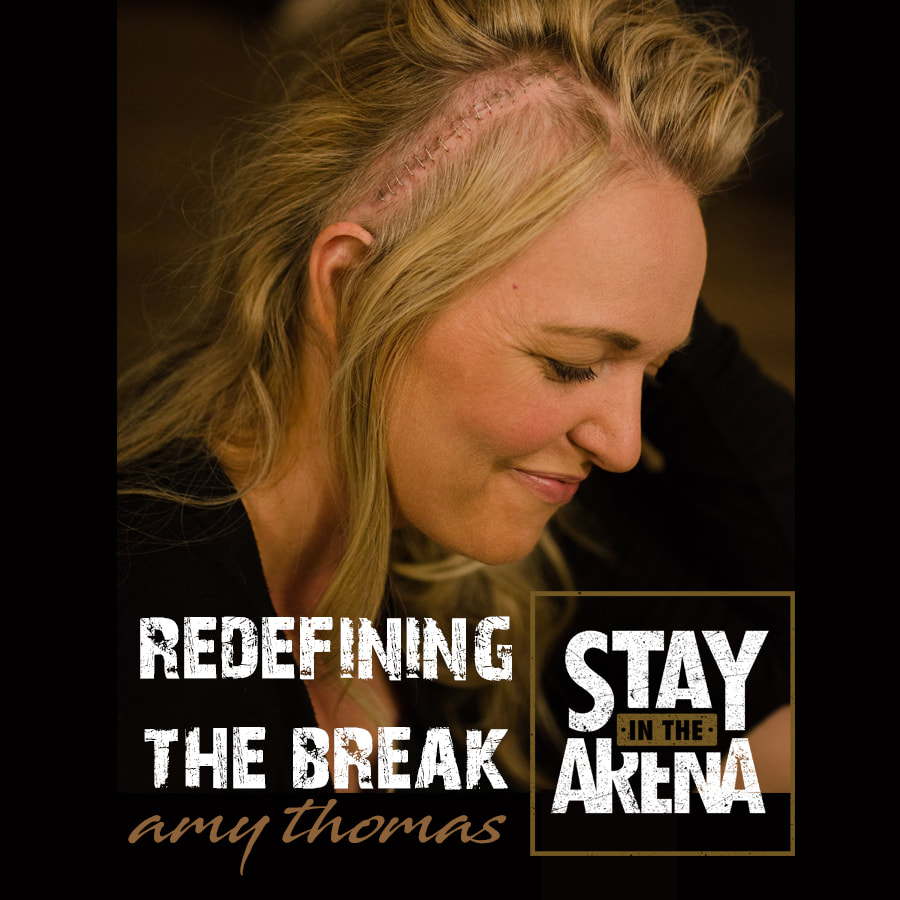
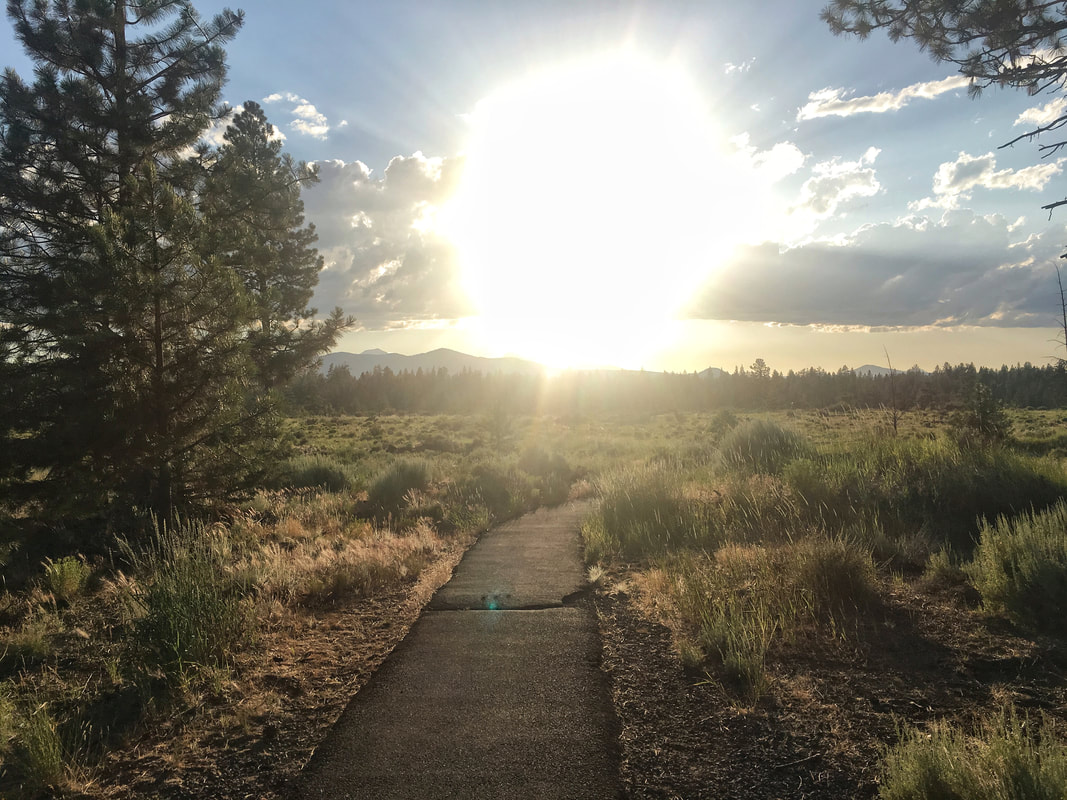
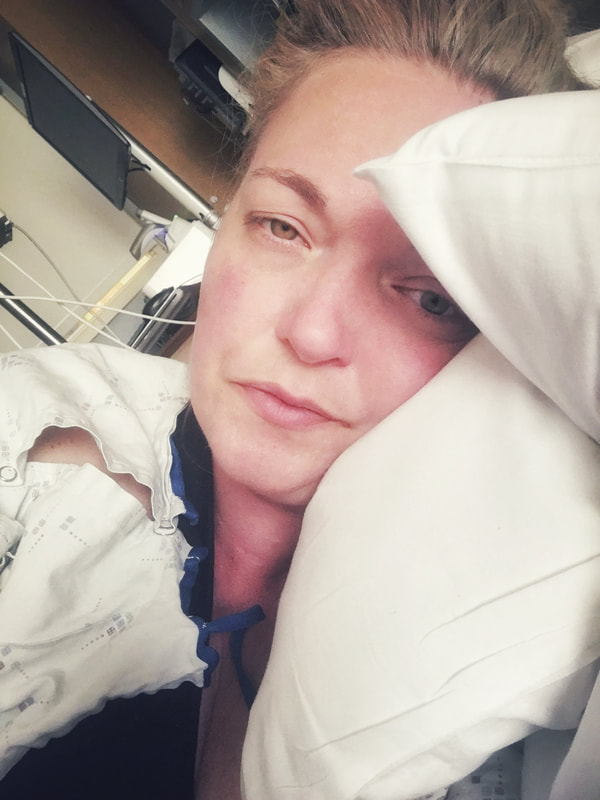
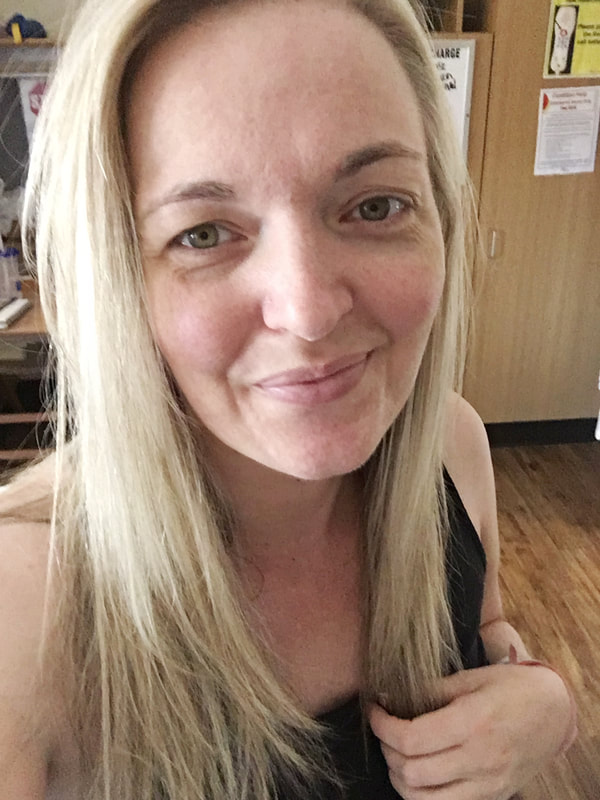
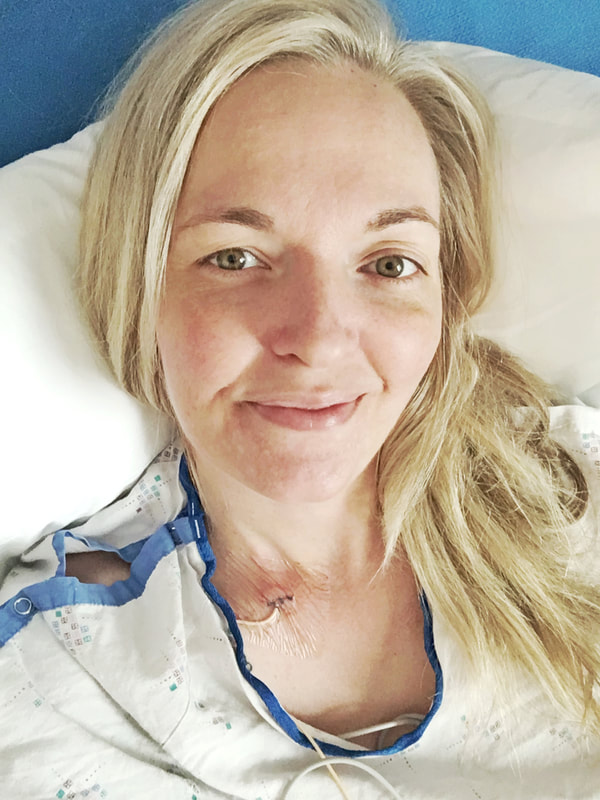
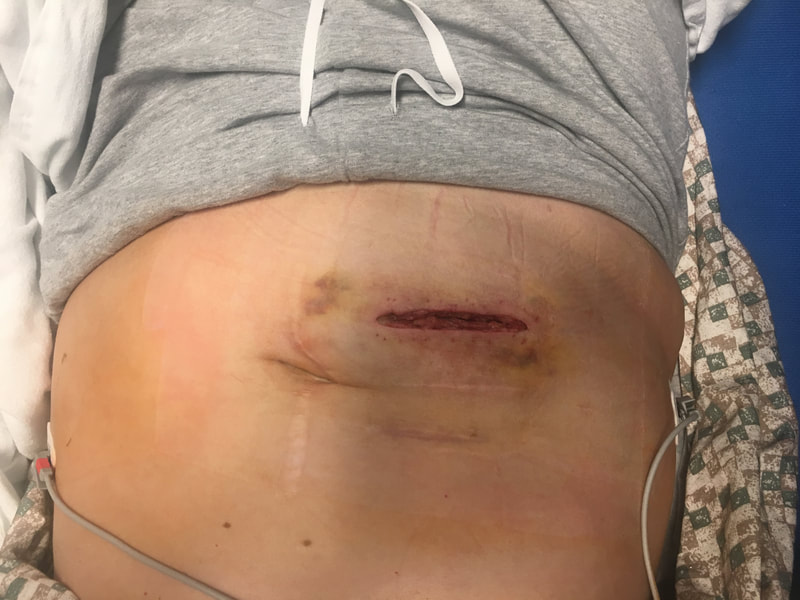
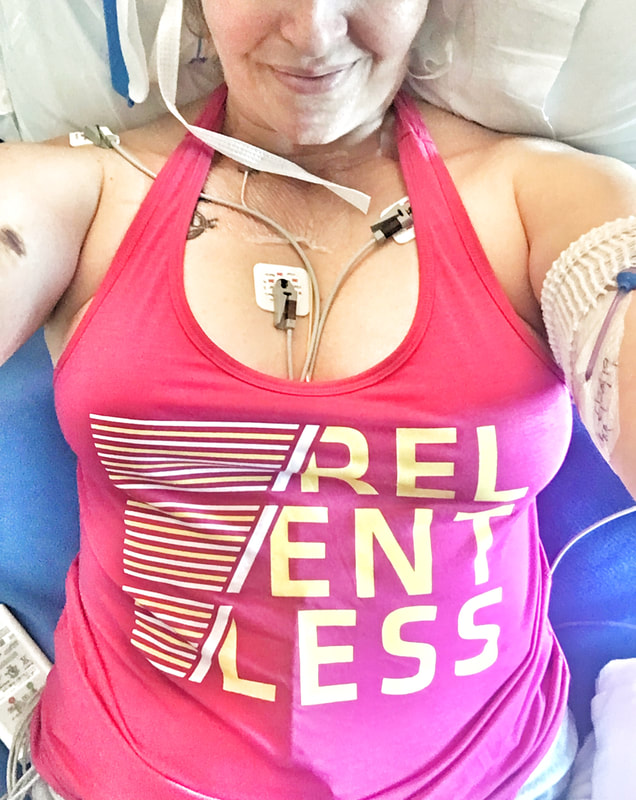
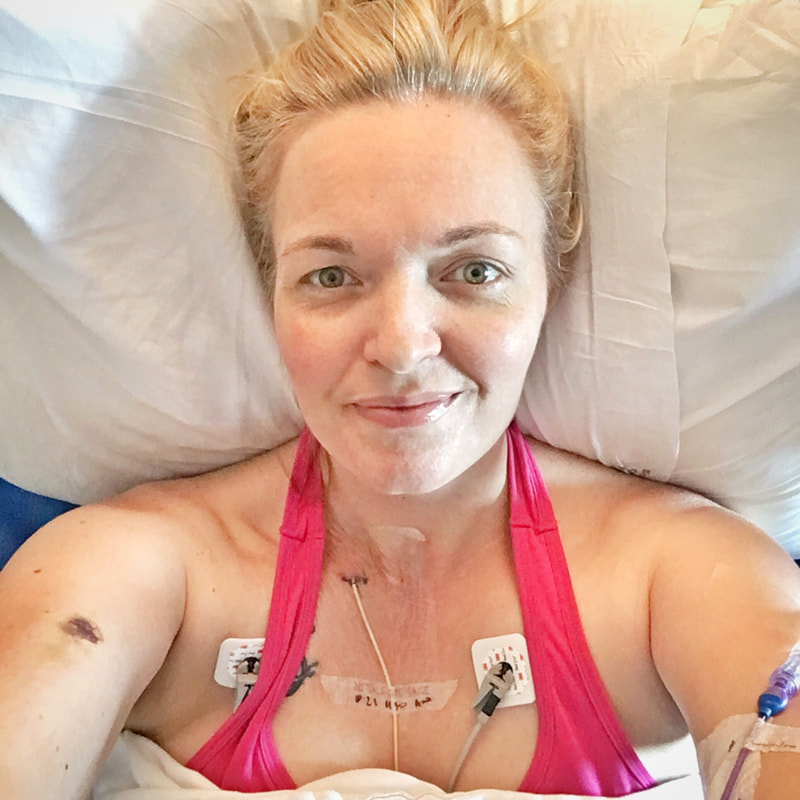
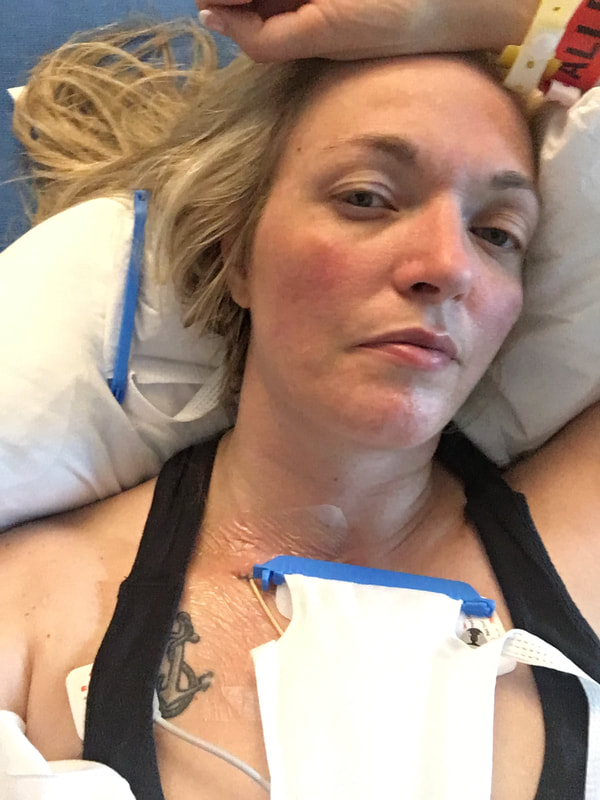
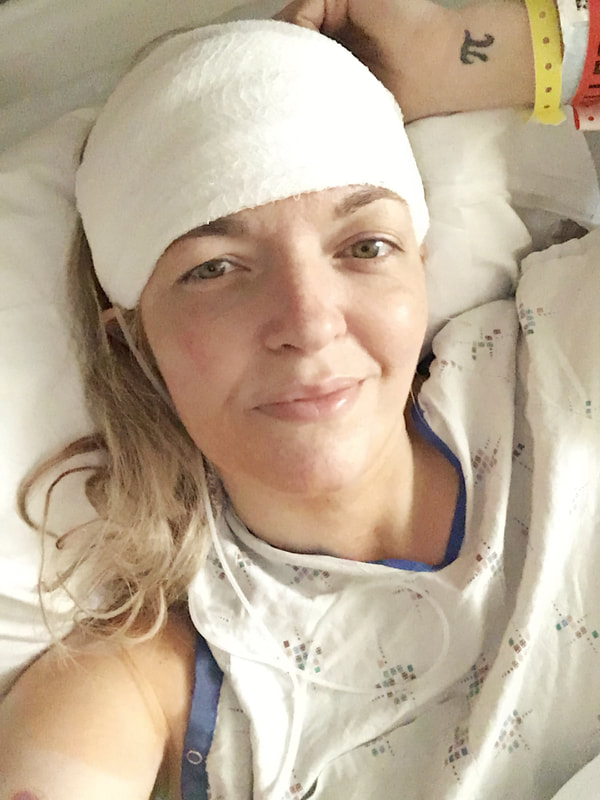

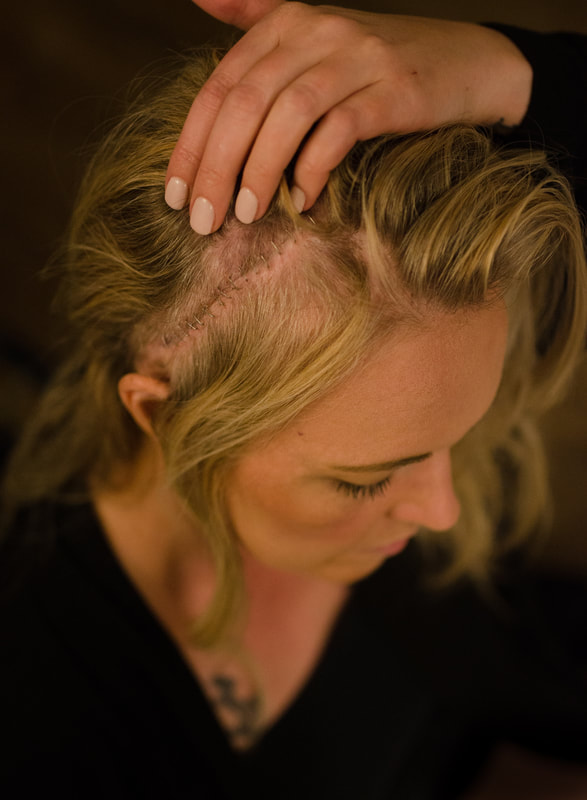
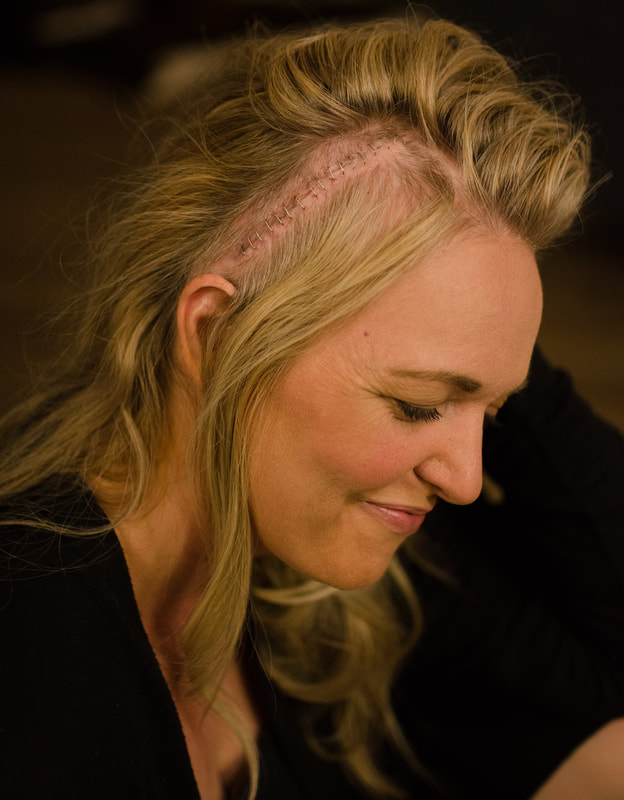
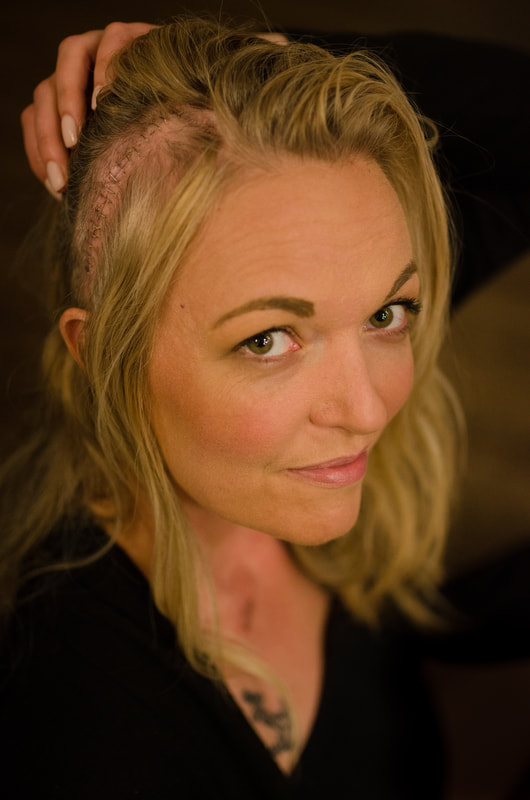
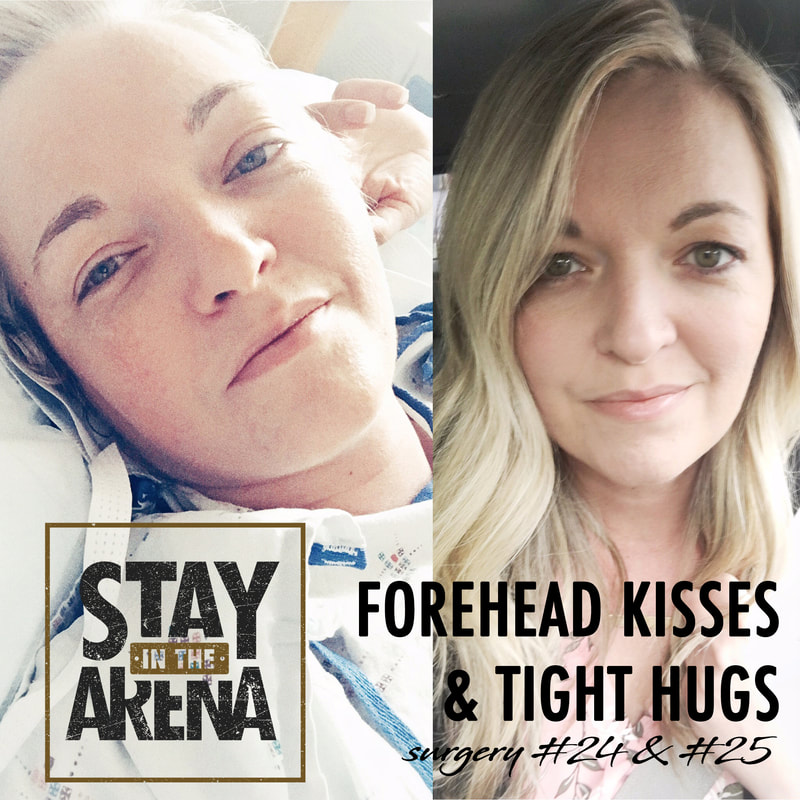
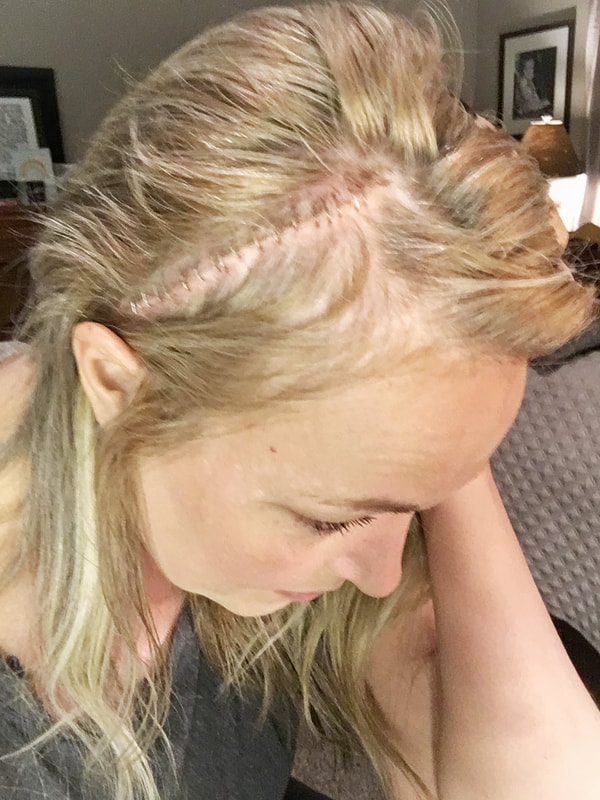
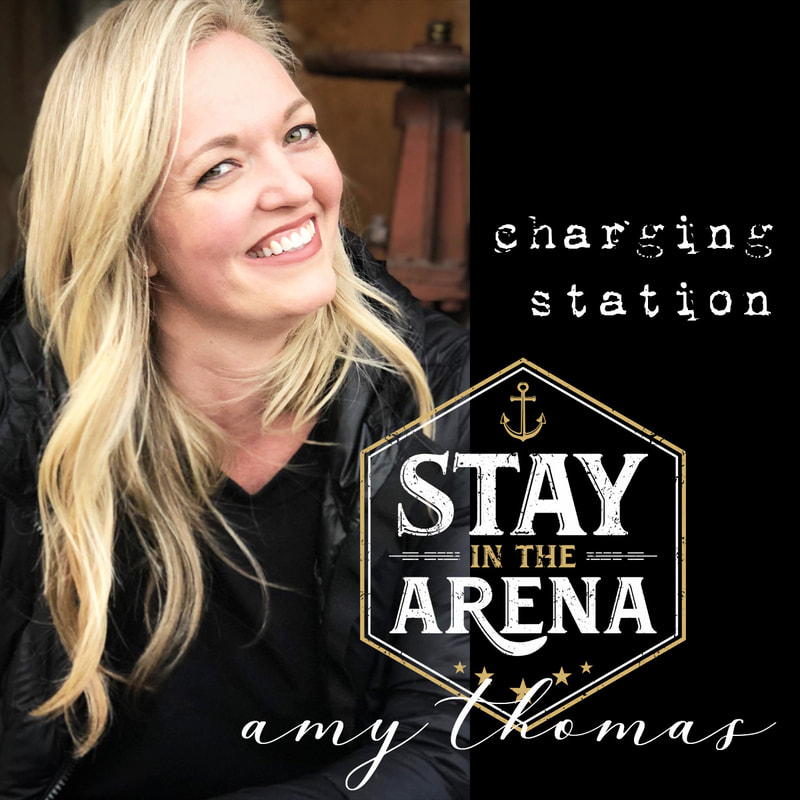
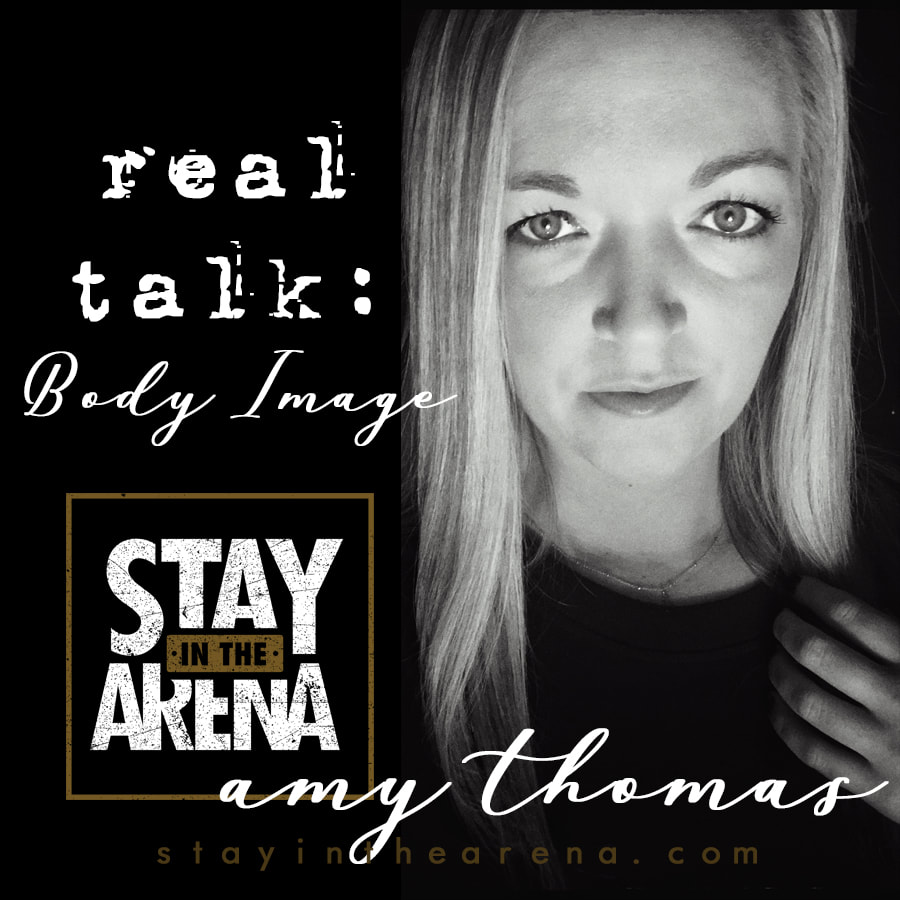
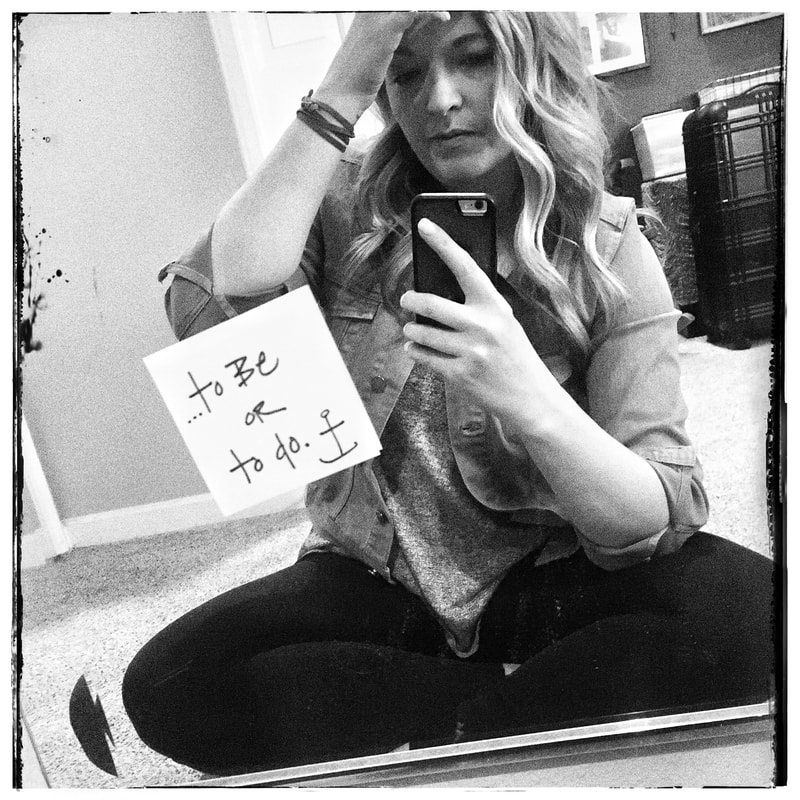
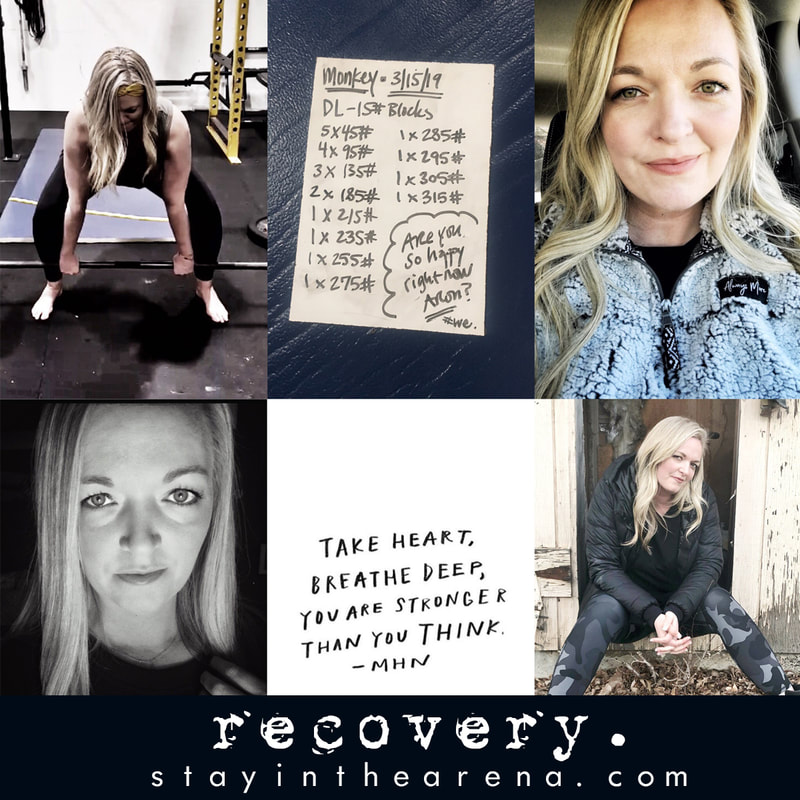
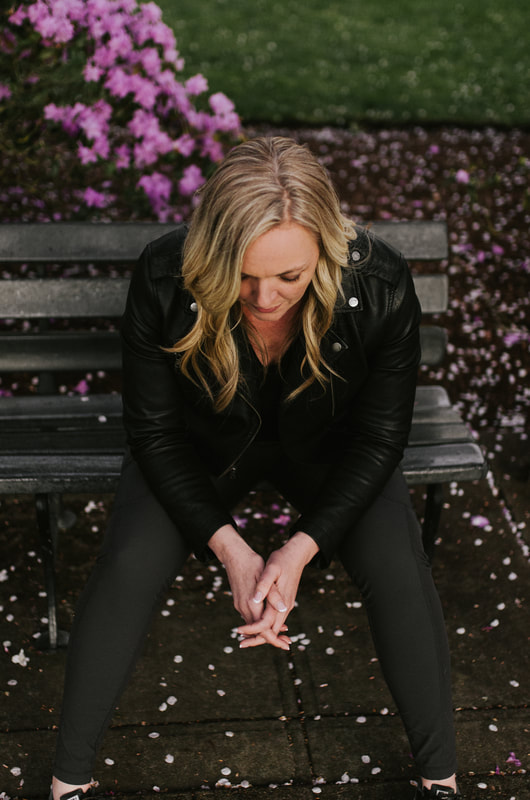
 RSS Feed
RSS Feed